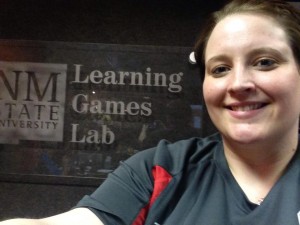 From the time of its birth over 100 years ago the idea of 4-H has stayed the same. The main job of the 4-H youth development program is to build skill sets for youth and their families to be productive and meaningful members of their community. The approach has been to teach in a way that is experiential, or learning in a way that is hand-on and outside of the traditional classroom.
From the time of its birth over 100 years ago the idea of 4-H has stayed the same. The main job of the 4-H youth development program is to build skill sets for youth and their families to be productive and meaningful members of their community. The approach has been to teach in a way that is experiential, or learning in a way that is hand-on and outside of the traditional classroom.
The program formed in 1902 in Clark County, Ohio. The foundation of 4-H is credited to A.B. Graham. Many of these clubs focused on agriculture, and appropriately linked up with agricultural fairs to show their skill set to those in their community. In 1914 the Smith-Lever act created the Cooperative Extension System through the USDA and nationalized the 4-H program. This linked the 4-H youth with knowledge of 109 land-grant universities and over 3,000 county offices nationwide.
The history of the 4 H’s gives deeper meaning to the program’s objectives. Head, heart, hands and health are the four h’s. Through those h’s, members are encouraged to build their skills in managing and thinking (head), relating and caring (heart), giving and working (hands), and being and living (health).
Today, 4-H has grown from its roots, to accommodate that same purpose focused on community and families. In Ohio, youth complete and learn through over 200 projects ranging from the tradition livestock, crops, cooking, and sewing to science-based technology projects such as robotics, healthy living, nutrition, and career developing projects. These projects help our nation to compete in key scientific fields to help take on the challenges of the 21st century.
At the local level, 4-H programs are guided by county Extension professionals who recruit, certify, train, and coach community volunteers. Those volunteers (over 100 in Van Wert) work with our 23 community clubs. Some of the clubs feature special focus such as the shooting sports, dogs, beef animals, sewing, rabbits, visiting other states to learn about their programs, and teen leadership.
Taking a project through a club gives members the opportunity to build meaningful relationships with their peers, and adults. Aside from the project members are given the opportunity to practice public speaking through demonstrations, learn how to conduct a business meeting with parliamentary procedure, and build relationships with others through respectful and thoughtful discussion and decision making.
The youth exhibiting their projects at the Jr. Fair showcase still projects in the Jr. Fair Building during the fair nestled in decorated club booths. Those exhibiting livestock get the chance to show their animal for quality of market purpose and showmanship. One of the highlights and signature programs in 4-H is the Quality Assurance (QA) program. QA trains members on 10 good production practices that all livestock producers (both commercial and person) must focus on. Good practices produce good market animals in which the public can feel confident and safe about consuming.
4-H gives purpose to youth searching for skill development (whether they realize it at the time or not). It gives the structure for purposeful socialization of youth, as well as purposeful healthy decision making. Soft skills are often sought for in the professional world, and 4-H gives youth those skills as they mature and develop into young adults. As a 4-H professional, my goal is to develop skills, while working hard, and having a whole lot of fun. That goal is my own professional purpose, and Extension and 4-H give me the ability to do that in the community.

